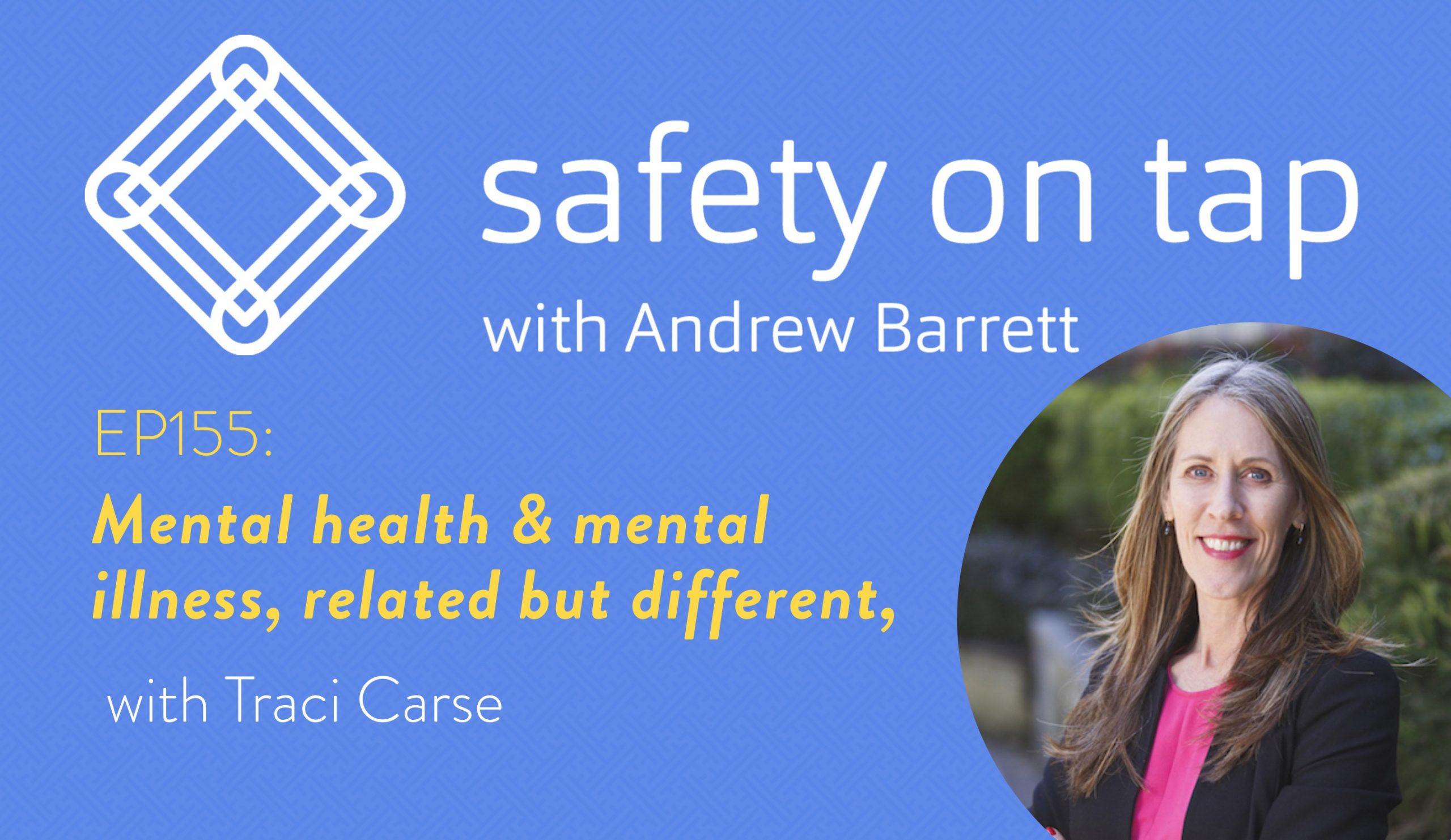Let’s play a quick game: I want you to say out loud the first word which comes to your mind, when I say….mental health. What did you say? Find out what I said, and how this is a core challenge in both boosting mental health and tackling mental illness.
Hey, it’s Andrew, and this is Safety on Tap.
Since you’re listening in, you must be a leader wanting to grow yourself and drastically improve health and safety along the way. Welcome to you, you’re in the right place. If this is your first time listening in, thanks for joining us and well done for trying something different to improve! And of course welcome back to all of you wonderful regular listeners.
My guest today is the inimitable and supremely articulate Traci Carse. Traci is the Occupational Psychologist at Fire and Rescue NSW, one of the world’s largest urban fire and rescue services. As an Organisational Psychologist, Traci has previously consulted for some of Australia’s leading safety, psychological health and wellbeing organisations. Traci has significant experience in applying psychology in the workplace through the design and delivery of mental health, resilience & wellbeing assessments and interventions across a range of work settings. She has published award winning research and delivered numerous presentations on workplace mental health and wellbeing. Traci is an Adjunct Fellow of Macquarie University, a Board Approved Supervisor, a Certified Gallup Strengths Coach, and recently held a position on the National Committee, College of Organisational Psychologists (Australian Psychological Society), as lead for the APS Workplace Excellence Awards.
Traci is passionate about championing a workplace within which employees are psychologically well, engaged and supported to perform at their optimum.
Here’s Traci:
I know this is a basic concept we talked about, but isn’t it powerful!
Here’s my three takeaways from that chat with Traci Carse:
Takeaway #1: MH & MI are not the same thing, they are two interrelated concepts. I didn’t get this, and I have a minor in psychology. If you are having conversations in your organisation about mental health, mental illness, or psychosocial risk, are you clear about what that means, and what it means to the people you are talking with?
Takeaway #2: If psychosocial risk is a risk in your organisation, which includes many many different industries, not just fire fighters, why don’t you have a psychologist advising you? Despite my minor in psychology I still forgot the full name of the Diagnostic Statistical Manual. Most of us health and safety professionals hit the boundary of our professional competence when it comes to understanding and tackling mental health and psychosocial risks, and definitely are out of bounds for mental illness. How are you accessing competent advice and support, if that’s not you or your health and safety team?
Takeaway #3: Having a basic model, like the four quadrants of high or low mental health, and high or low mental illness, provides a solid foundation to have conversations with key stakeholders, reveal and reinforce understanding, and to get clear on what you want to achieve and how. The areas of priority, the programs and initiatives to be developed, the human and other resources necessary to move the needle. This contrasts with a safety model, like a risk based hazards and controls model, is not going to work. Neither is hierarchy of controls, so stop using that for this purpose. Square pegs are not for round holes no matter how much you shove them. Use the right model for the right purpose and it will lubricate your change efforts.
Grab my handwritten reflection notes, a template for your own reflections, and the transcript of this episode all for free over at safetyontap.com/ep155
Thanks so much for listening. Until next time, what’s the one thing you’ll do to take positive, effective or rewarding action, to grow yourself, and drastically improve health and safety along the way? Seeya!
Here’s your FREE reflection worksheet from this episode.
And here’s your FREE download of the full transcript of this episode.
Feel free to share this with your team/colleagues!

